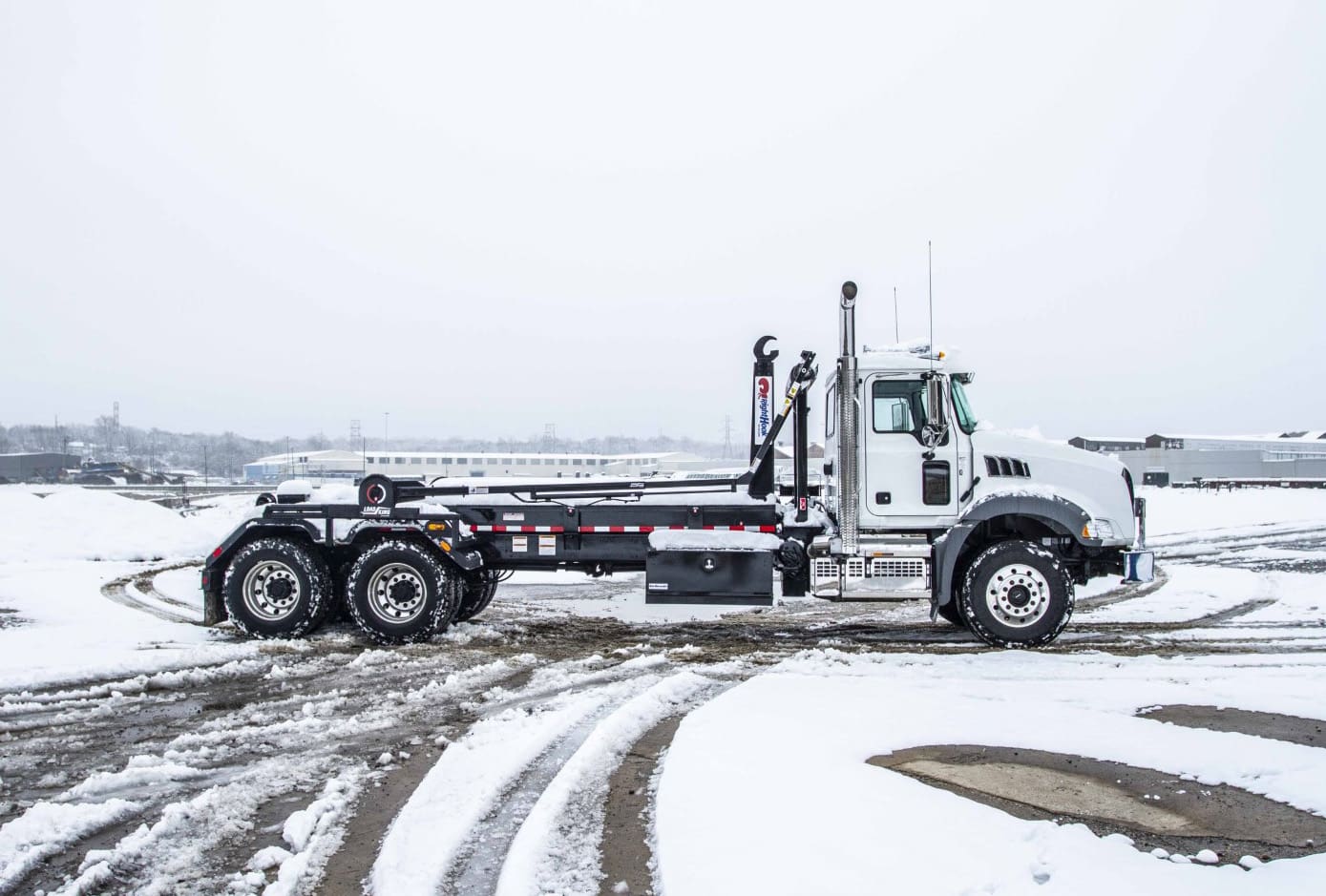
For construction teams, garbage haulers, demolition crews and clean-out workers, roll-off trucks are an essential piece of equipment that offer incredible flexibility to pick up and drop containers in a manner that no fixed body truck can.
This ease of operation, however, can be further enhanced by the kind of hoist system you choose: hook lift or roll-off cable hoist. Both have advantages and disadvantages in the method they employ to load and unload containers, and in this article, we’re going to help you compare the two, so you know which one is better suited to your work needs.
Cable Hoists
Roll-off cable hoists are the most common hoists in use today. These trucks employ a winch and a cable to pull containers or other bodies up onto the truck’s bed.
Cable hoists are more suitable than hook hoist for unloading at sites with limited overhead clearance, inside or out, due to its lower angle unload capabilities. As the name suggests, cable hoists need to have nose rollers and rear wheels to allow the cable to pull them up on chassis.
Cable hoist roll-offs are designed to carry both inside and outside rail containers, which maximizes its usability. They are also versatile enough to work with any truck chassis, suspensions, exhaust systems and fuel tanks.
Generally speaking, cable hoists are more efficient when it comes to servicing heavier loads. Rather than lifting from back to front on the same geometric angle, the cable system pulls the weight up the rails, and being able to adjust the incline of the rails as the load is being pulled also means that the tension on the cable itself is significantly reduced.
If you’re working with containers of different lengths, the cable hoist design gives you more room for maneuver, as long as the container does not extend beyond the tail end of the rails.
Shop Roll-Offs and Hook Hoists
Hook-Lifts
Hook hoist roll-off trucks have a heavy-duty truck chassis that has been fitted with a hydraulic lift hoist. Drivers back up to a container or body, connect the hook of the truck to a receiving hook on the container, and then lift it up onto the truck.
As these roll-off trucks are designed without truck-mounted winches and cables, hook hoists provide more accuracy in dropping containers in an exact position than cable hoist roll-off trucks. Hook hoists are also more suitable when maneuvering into and out of tight spaces.
Since hook lifts hoist containers right onto the bed of the truck instead of rolling them on, compatible containers and bodies don’t need nose rollers or rear wheels.
Hook lifts are extremely well-suited for a variety of industries, such as waste management, recycling, landscaping, construction and roofing.
They can haul many types of truck bodies or containers, which significantly cut costs for contractors, municipalities and others by reducing fleet sizes. It’s a mix-and-match system because hook hoists can do the work of several truck systems – all you do is add truck bodies or containers as needed. They offer convenient, ground-level loading and unloading of materials too.
But perhaps, the best attribute of all is that drivers can complete a pick-up or drop-off quickly and safely, from within the cab of their truck. (With the cable hoist, the driver must physically latch the cable onto the front hook of the box.) They don’t have to step out for the entire duration of the operation, which saves time and effort, every season, throughout the year.
This convenience improves operator safety, as they are far removed from moving machinery, and owner liability is reduced as well!

